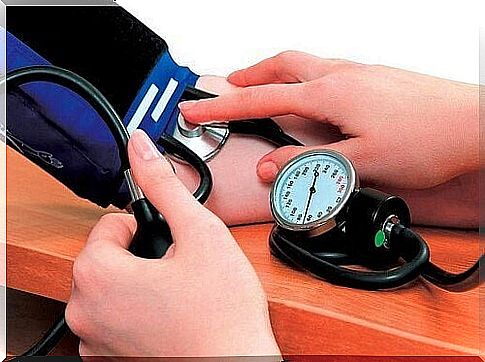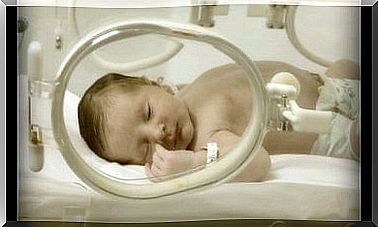Postpartum Pre-eclampsia: What Are The Causes?

Postpartum pre-eclampsia is one of the most delicate conditions a woman can experience. Although it is not very common, it is necessary to take preventive measures and recognize the symptoms in a timely manner in order to receive the appropriate treatment. They can appear immediately after childbirth and extend from a month and a half to three months.
To begin with, we should define postpartum pre-eclampsia as an illness related to high blood pressure, just as it does during pregnancy.
It is important to clarify that this condition requires immediate treatment to avoid the risk of cardiovascular problems. Among them, we can mention damage to the veins and blood vessels and long-term heart problems.
Signs and symptoms of postpartum preeclampsia
- Sudden rise in blood pressure. By high blood pressure we mean 14/9 or higher values.
- A concentration of over 300 mg of protein in urine.
- Sudden and temporary loss of vision. There may also be hypersensitivity to light, weakness, fatigue and altered states of consciousness, for example.
- Sudden and noticeable increase in weight. For example, one or two pounds a week, even if you are on a healthy diet. Nausea and vomiting can also occur.
- Inflammation in extremities and face.
- Pain in stomach or abdominal area.
- Pain when breathing.

Causes of postpartum pre-eclampsia
Doctors and scientists have yet to reach a consensus on the ultimate cause of this condition. However, the most viable explanation is that it arises in women who have suffered from pre-eclampsia during pregnancy, without even knowing it.
Another factor that may have an impact for the condition to occur is having a family history of the same disease. Other risk factors are:
- Increased blood pressure from the 20th week of pregnancy.
- Pregnancies that occur before 20 or after 40 years of age.
- Obesity or overweight.
- Multiple pregnancy.
Complications associated with postpartum pre-eclampsia
- Thromboembolism. This disease consists of the simultaneous appearance of two conditions: venous thrombosis and pulmonary embolism. When this condition occurs, there are breathing problems, chest pain, fever and inability to lead a normal life.
- Pulmonary edema. This is a disease that drastically affects the respiratory system. It consists of the accumulation of fluid within the tissues and cavities of the lungs. It can be identified by expelling blood when coughing, in addition to anxiety, excessive sweating and difficulty breathing in and out.
How is it diagnosed and what is the treatment?
- Bloodtests. With these tests, it is verified that the functioning of the liver and kidneys is normal. In addition, it is also checked whether the woman has a healthy count of platelets, the cells that regulate clotting in the circulatory system and that can save a life in case of bleeding.
- Urine tests. With this type of analysis, the concentration of protein in the urine is determined. An amount greater than 300 mg is a warning sign.

Regarding the treatment of postpartum pre-eclampsia, it is certainly necessary to clarify that, in general, the use of medication is necessary. In fact, treatment should focus on preventing seizures, lowering blood pressure, and normalizing urine composition.
So now you know how to identify the symptoms of postpartum pre-eclampsia and the consequences that can occur as a result of ignoring them.
Your body is more vulnerable after having a baby and that’s why it’s so important to pay attention to the signals it gives you. Your first concern should be your own health so that you too can take care of your child and family.








